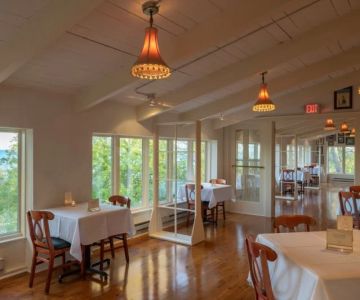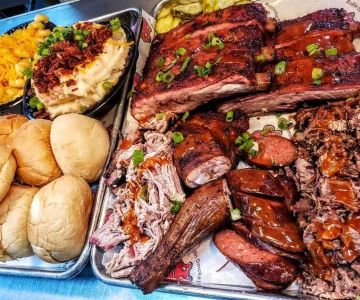- 1-Understanding-the-Basics-of-Pairing
- 2-Pairing-Chocolate-with-Wine
- 3-Pairing-Chocolate-with-Cheese
- 4-Combining-All-Three-for-an-Unforgettable-Experience
- 5-Tips-for-Serving-and-Presenting
1. Understanding the Basics of Pairing
Pairing chocolate with wine and cheese is an art that balances flavors, textures, and aromas to create harmonious taste experiences. Knowing the fundamental principles, such as matching intensity and complementing sweetness or bitterness, is key to successful pairings.
For example, a bold dark chocolate needs a wine and cheese with equally strong flavors, while a creamy milk chocolate pairs best with lighter, sweeter wines and milder cheeses.
1.1 Flavor Profiles Matter
Understanding each ingredient’s flavor profile—fruity, nutty, earthy, or spicy—helps you find combinations that either contrast or complement each other in pleasing ways.
2. Pairing Chocolate with Wine
Chocolate and wine pairing is a classic favorite. Rich, dark chocolates often pair well with full-bodied red wines like Cabernet Sauvignon or Zinfandel. The tannins in these wines interact nicely with the bitterness of dark chocolate, creating a balanced palate.
Milk chocolate’s sweetness and creaminess complement lighter red wines such as Pinot Noir or even sweet whites like Riesling. For adventurous tasters, sparkling wines offer a refreshing contrast that cleanses the palate.
2.1 Case Study: A Perfect Match
A renowned chocolatier once paired a 70% cocoa dark chocolate with a robust Malbec during a tasting event. The smoky notes in the wine enhanced the chocolate’s depth, creating an unforgettable experience praised by attendees.
3. Pairing Chocolate with Cheese
While cheese and chocolate might seem unusual, thoughtful pairings can elevate both. Soft cheeses like Brie or Camembert harmonize with milk chocolate’s sweetness, while sharp, aged cheeses like Parmesan contrast delightfully with bitter dark chocolate.
Blue cheeses with their pungent profiles can stand up to intense chocolates, particularly those with added flavors like chili or sea salt.
3.1 Tips for Balancing Textures
Pairing creamy cheeses with crumbly or crunchy chocolates creates textural interest that enhances the tasting experience.
4. Combining All Three for an Unforgettable Experience
The true magic happens when chocolate, wine, and cheese come together. Designing a tasting flight where each component builds upon the last can take your palate on a journey.
For instance, start with a soft cheese and milk chocolate alongside a light white wine, progress to a dark chocolate and sharp cheese paired with a bold red, and finish with a dessert chocolate and sweet wine combination.
4.1 Story from a Foodie Event
At a recent gourmet tasting, a chef created a pairing menu featuring rich chocolate ganache, creamy triple-cream cheese, and a velvety Merlot. Guests raved about the seamless transitions and how the trio enhanced each other’s flavors.
5. Tips for Serving and Presenting
Presentation matters—use elegant platters and proper glassware to showcase your selections. Senix Table offers stylish serving solutions designed to elevate your tasting events.
Remember to serve wine at the right temperature and provide palate cleansers like plain crackers or water between tastings. Label each item clearly and encourage guests to savor each pairing mindfully.
Mastering how to pair chocolate with wine and cheese opens doors to rich sensory pleasures. With the right knowledge and quality serving tools from Senix Table, you can impress guests and create memorable moments every time.







 BORI - Montrose4.0 (119 reviews)
BORI - Montrose4.0 (119 reviews) Louisiana Famous Fried Chicken3.0 (891 reviews)
Louisiana Famous Fried Chicken3.0 (891 reviews) Treebeards4.0 (635 reviews)
Treebeards4.0 (635 reviews) Salata3.0 (33 reviews)
Salata3.0 (33 reviews) Lost & Found4.0 (15253 reviews)
Lost & Found4.0 (15253 reviews) Mai's Restaurant4.0 (3504 reviews)
Mai's Restaurant4.0 (3504 reviews) Best Places for Seafood Boils and Clambakes Across the U.S.
Best Places for Seafood Boils and Clambakes Across the U.S. Discover Delicious Vegan Desserts at Local Bakeries Near You
Discover Delicious Vegan Desserts at Local Bakeries Near You The Ultimate Guide to New Year’s Eve Dining in Major Cities
The Ultimate Guide to New Year’s Eve Dining in Major Cities The Future of Sustainable Restaurants in America: Trends and Innovations
The Future of Sustainable Restaurants in America: Trends and Innovations Best Late-Night Eats in Major U.S. Cities: Where to Satisfy Your Midnight Cravings
Best Late-Night Eats in Major U.S. Cities: Where to Satisfy Your Midnight Cravings Best Smoothie and Juice Bars for a Quick Healthy Bite
Best Smoothie and Juice Bars for a Quick Healthy Bite